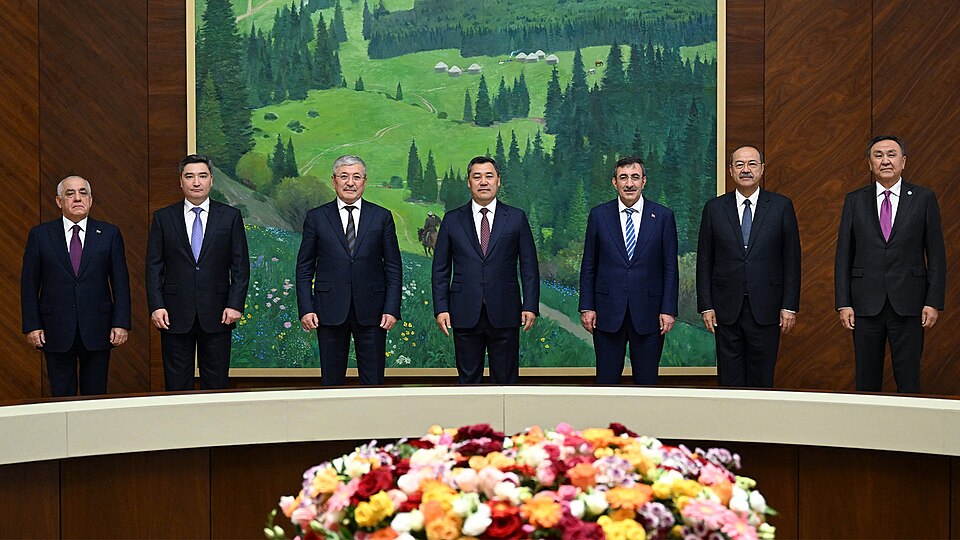The dynamically changing geopolitical landscape in the Eurasian region after 2022 has emboldened relatively small countries in the region to launch a series of critical reforms, specifically in the economic field, to diversify economic partnerships, decrease dependence on particular countries, and mitigate potential risks. Nonetheless, amid geopolitical uncertainties, such as China’s shifting economic trajectory, the re-emergence of the Organization of Turkic States (OTS), and the Middle Corridor transit route as a key artery, the stakes for global powers’ engagement with Central Asia have been elevated. Notwithstanding the growing Western interest in rare earth materials in Central Asia, the region has long been dominated by Russian and Chinese capital, particularly in the mining field, although regional dynamics are changing in favor of local states recently.
In this vein, it is noteworthy that the landlocked and energy-rich Central Asian region became an area of specific interest for regional and global actors, shedding light on the region’s importance. As such, in the last five years, countries like Kazakhstan and Uzbekistan announced groundbreaking economic reforms to attract additional investments from Europe and the US, while deepening ties with the Trump administration.
While the previous U.S. administration’s 2023 strategy aimed to reinforce the sovereignty and independence of Central Asian states primarily through private-sector engagement and the promotion of a favorable business environment, the current Trump administration has elevated these relations to a strategic partnership. In this regard, in the first months of his second term, President Donald Trump has signed trade deals with Central Asia worth a collective $12.4 billion.
This shift reflects Washington’s recognition of the region’s critical importance as a source of natural resources and raw materials, as well as its growing geopolitical relevance in the evolving global order. As such, on November 6, President Donald Trump hosted. hosted the leaders of the five Central Asian states at the White House, an event underscoring Washington’s heightened interest in securing access to rare earth elements essential for advanced technologies such as smartphones, electric vehicles, and defense systems. This engagement reflects a broader strategic trend in which critical minerals have emerged as a central pillar of the U.S.–Central Asia relationship, linking regional diplomacy to the global competition over technological and resource security.
The C5+1 format supports three main pillars of engagement: economy, energy, and security. Considering these particular pillars, the US recently established multilateral and bilateral partnership formats with Central Asian nations. In October 2025, Kazakhstan signed a $4.2 billion trade agreement with the US. Consequently, in terms of energy and raw materials, Kyrgyzstan holds particular importance for the US, as in 2022, the country ranked fifth in the world in mercury production, accounting for 0.5% of total global production. In addition, gold remained the primary mineral mined in the landlocked country, while the country also boosted production of cement, clay, coal, copper, gypsum, lime, mercury, natural gas, crude petroleum, salt, silica, sand, and gravel, as well as silver. In January 2025, Kyrgyzstan’s cement production surged by 20.4 percent compared to the same month in 2024, reaching 117,900 tons. Undoubtedly, the positive dynamic in domestic production can be attributed to the Kyrgyz government’s recent economic reforms and interventions aimed at promoting the local cement industry. The Kyrgyz government recognizes the crucial importance of sustainable resource management to boost local businesses and attract foreign investment, as the country’s economy heavily relies on the extraction and export of mineral resources.
For that purpose, Kyrgyzstan was one of the first in the region to adopt the “Digital Code,” creating a favorable legal environment for the development of the digital economy and attracting investment. Moreover, to boost its image as an investment-friendly country and comply with international standards in the mining industry, the Kyrgyz government has taken steps by introducing stricter regulations and promoting responsible mining practices. Such an approach to foreign investments and economic reforms enabled the country to host the second B5+1 business meeting in Bishkek on February 4–5, 2026.
Kyrgyzstan’s stance on the sustainable management of natural resources is of particular importance to it, as it plays a vital role in supporting its economy, livelihoods, and ecological balance. Indeed, like other neighboring states, Kyrgyzstan is a strategically located, resource-rich country that is increasingly open to engagement with the West. Therefore, with the changing power balance in Eurasia, China’s regional ambitions, and Bishkek’s willingness to diversify trade, the US has a rare opportunity to reassert itself as a reliable and long-term partner. Considering such prospects, the US must decide how to adapt its foreign policy priorities to new geopolitical realities by encouraging other countries to also adopt the C5+1 format, thereby increasing the list of potential investors and partners.
[Photo by Primeminister.kz, via Wikimedia Commons]
The views and opinions expressed in this article are those of the author.

